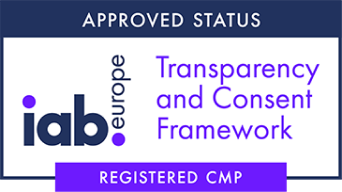Maximize revenues with dynamic pricing and marketing strategies
Setting a price for the products you offer to consumers is no easy task. Yet it’s the price on which the profitability and health of your business depend. Implementing a dynamic pricing strategy requires consideration of many factors, as well as planning, analysis and a good understanding of market dynamics and customer preferences.
Casaneo invites you to discover how to develop an effective sales strategy that will help you maximize your revenues and build customer loyalty.














affiliation platform for the Home & Fashion Made in France universe
of sales generated in 2023 for our advertisers
1 invested generates over €14 in sales
Define your pricing objectives
Dynamic pricing involves adjusting product or service prices according to consumer demand, competition, costs and other external factors.
This strategy enables many sectors, particularly online businesses, to react quickly to market fluctuations. By adjusting prices at the right time, you can better manage inventory, improve sales and attract more customers.
To implement an effective dynamic pricing strategy, you need to start by defining your business objectives, which must be aligned with the overall vision of your business. These objectives may vary according to the nature and stage of development of your e-commerce business.
Here are some common objectives that can guide your dynamic marketing pricing strategy.
Maximizing profit
Profit maximization is one of the main pricing objectives. Prices must be set taking into account costs, demand elasticity and market competition. Carry out an in-depth analysis of your production and distribution costs and desired profit margins.
You also need to understand how demand for your products varies with price, and constantly monitor your competitors’ prices.
Market penetration strategy
Just starting out in the home business? You can prioritize market penetration by offering lower prices than your established competitors.
This approach will enable you to attract new customers and increase your market share. However, this strategy requires rigorous cost management to avoid selling at a loss.
Premium pricing
Do you offer unique, high-quality products or services? Adopt a premium pricing strategy to position your brand in the luxury segment. This strategy is based on the idea that some consumers are willing to spend more to obtain higher quality or more exclusive products.
To succeed in this approach, you need to build a strong brand image and clearly communicate the superior value of your products.
Price skimming
This strategy involves setting high prices at the launch of exclusive or innovative products. Once initial demand has been satisfied, prices can be revised to attract a wider audience. This approach is commonly used for new technologies or gadgets.
Enthusiasts are willing to pay more to be the first to own the product.
Survival or equilibrium price
Certain situations, such as entering a new market or facing stiff competition, can be difficult for some businesses to manage. You need to think about setting prices that cover costs and ensure the survival of your business, rather than maximizing profits.
This strategy is particularly beneficial for businesses seeking to establish a market presence without incurring significant financial losses. By adopting a balanced pricing approach, you ensure the viability of your business while maintaining its competitiveness.
Analyze competition and consumer behavior
To develop a dynamic pricing strategy, you also need to carry out an in-depth market study. This analysis will provide you with valuable information on :
- Prices set by your competitors
- Consumer behavior
- Market trends
- Customer preferences.
Here are the steps involved in carrying out market research on pricing.
Analyze competitive prices
Competitor analysis helps you understand the pricing strategies adopted by market players. In particular, examine the prices set, product offerings, market positioning and target customers of each competitor.
This will enable you to identify their strengths, weaknesses and pricing models. This will enable you to set your prices competitively.
Studying consumer behavior
Also conduct consumer surveys and join focus groups. This will enable you to gather data on consumers’ perception of value.
These methods enable you to understand customers’ willingness to pay, their price sensitivity and their perception of the products or services offered. This will enable you to adjust your pricing strategy to meet consumer expectations while maximizing revenues.
Examining price elasticity
Price elasticity measures the responsiveness of demand to price changes for your products or services. This measure helps determine the optimal price level likely to maximize revenues. Understanding this elasticity enables you to set prices that effectively meet market expectations and your financial objectives.
Assess market trends and analyze demand
Keeping abreast of market trends and changes in consumer behavior also enables us to continually adjust our pricing strategy. By analyzing demand patterns, we can identify opportunities to adjust prices or develop new pricing strategies.
Adjust prices in real time
Dynamic pricing means adjusting prices in real time. The adjustment depends on market conditions and fluctuations in demand. Here are some important points to consider.
Monitoring and responding to demand and supply
To implement an effective dynamic pricing strategy, you need to keep a close eye on the dynamics between supply and demand. This will enable you to adjust prices accordingly. During periods of high demand or when supply is limited, raising prices can maximize revenue. Conversely, during periods of low demand or excess inventory, lowering prices can stimulate sales and reduce the risk of inventory obsolescence.
Reacting to competitor price movements
Keep an eye on competitors’ prices to stay competitive. If competitors lower their prices, adjusting prices appropriately may be necessary to maintain a strong market position. By adopting a strategy of slight undercutting when necessary, you can attract customers while preserving profitability.
Adapt to market seasonality and trends
Seasonal fluctuations and market trends greatly influence consumer demand. So consider adjusting your pricing strategy to take advantage of periods of high demand associated with specific seasons or events. Strategic adjustments may be necessary to attract consumers during quieter periods.
Opt for segmented pricing
Customer segmentation is a strategy for optimizing revenue by responding in a targeted way to the varied needs of your customers. Divide your target market into distinct groups based on criteria such as demographics, buying behavior and product preferences. This will enable you to adjust your pricing strategies to maximize the perceived value of each segment. Here’s how to effectively implement price segmentation.
Segment identification
First, analyze your customer base and identify distinct segments such as age, gender, income, geographic location, etc. Understanding these differences will help you meet the specific needs of each group. By understanding these differences, you can better respond to the specific needs of each group. This will enable you to personalize your offers and pricing strategies.
Price sensitivity analysis
Once the segments have been identified, assess the price sensitivity of each one. Some segments may be very sensitive to price fluctuations. Others may be willing to pay a higher price for additional features or benefits. This analysis can be carried out with the help of in-depth market research. You can also examine historical purchasing behavior data to determine the price elasticity of each segment.
Development of pricing strategies
Based on your price sensitivity analysis, the next step is to develop specific pricing strategies for each customer segment. You can, for example, offer different price levels, create advantageous bundled packages, offer selective discounts or set up personalization options.
Communicating value
Effective communication is essential to articulate the value of each offer to the relevant customer segments. Remember, therefore, to tailor your marketing messages and value propositions to highlight the benefits and features most relevant to each group. In this way, you can reinforce the perceived value of the product or service on offer. Highlight specific benefits that resonate with the particular needs of each segment. This targeted approach helps justify the asking price and improve sales conversion.
Use pricing as a marketing strategy
Discounts and promotions are also part of a dynamic pricing strategy. They can also serve as effective marketing tools to attract customers, boost sales and create a sense of urgency. Here are some points to consider when using pricing effectively.
Defining promotional objectives
First, you need to define the specific objectives you wish to achieve through promotions. Do you want to increase sales, attract new customers, clear excess stock? Do you want to encourage repeat purchases or boost brand awareness? Each objective requires an adapted pricing strategy to maximize its impact.
Choosing the right time and duration
The promotional calendar must be carefully planned. It should be based on seasonality, vacations and events influencing the buying behavior of target consumers. Short-term promotions, accompanied by a sense of urgency, tend to generate more convincing results by inciting immediate action.
Structuring discounts to maximize efficiency
The right discount structures can help you achieve your objectives while preserving profit margins. You can, for example, offer percentage discounts, bundled discounts or loyalty rewards. However, you must ensure that these strategies do not compromise the overall profitability of your business.
Selecting appropriate communication channels
Identify the most effective communication channels for reaching target customers with promotional offers. These may include e-mail marketing, social networks, online or traditional advertising. Adapt the message and creative resources to each channel. This way, you can optimize their impact and increase the visibility of your promotions.
Creating a perception of exclusivity and rarity
To stimulate demand and create a sense of urgency among consumers, don’t hesitate to create a perception of exclusivity or scarcity around promotions. Limited-time offers, restricted stock availability or exclusive access can encourage customers to act quickly. This reinforces the overall effectiveness of promotional campaigns.
Evaluate and adjust your marketing pricing strategies
To stay competitive in the marketplace, you need to monitor and adjust your pricing strategies. This ongoing practice enables you to react to rapidly changing consumer preferences, competitive pressures and economic fluctuations. Here’s how to effectively optimize your pricing strategies to maximize your revenues and maintain your market position.
Monitor performance indicators
Defining and tracking key performance indicators (KPIs) makes it easier to assess the effectiveness of your pricing strategies. KPIs to consider may include market share, customer satisfaction and loyalty, profit margins or average order value. Establish benchmarks to compare current performance with targets. This will enable you to identify areas requiring adjustment.
Analyze customer feedback
Collecting and analyzing customer feedback provides valuable information on how your customers perceive the value of your products or services. Study the comments, opinions and feelings expressed by customers to understand their level of satisfaction with your prices. This qualitative data also reveals specific areas for improvement, such as aligning prices with customers’ perceived value.
Conduct price tests and experiments
Conducting periodic price tests and experiments is an effective strategy for assessing the impact of price adjustments. Use data based on these experiments to analyze how price changes influence sales, profitability and customer buying behavior.
Review pricing strategy
Review your pricing strategies on a regular basis, taking into account :
- Market trends,
- Changes in customer preferences
- Business objectives.
Assess the effectiveness of your current pricing models, value propositions and promotions. Adapt your strategies accordingly to maximize profitability while meeting changing consumer expectations.



